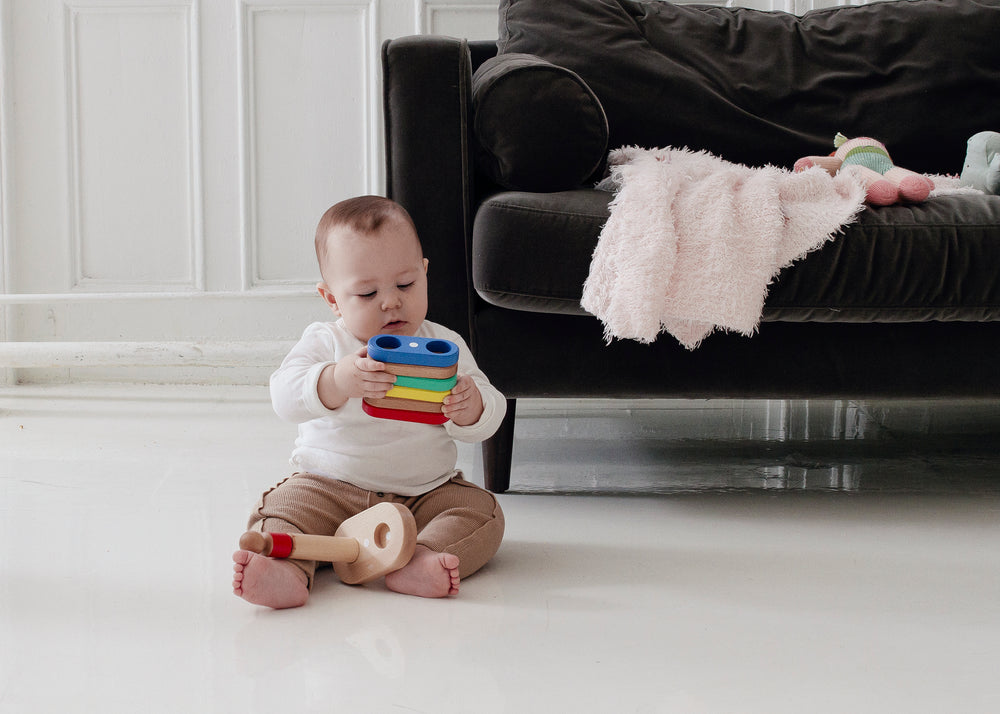3 Ways to Support Independent Baby Play


As parents, we can support independent play by allowing ourselves to observe more and entertain less. Babies, as well as big kids, benefit from a balance of independent play and engaging family play experiences. Independent play allows children of all ages to identify their own interests, develop problem solving skills, regulate their emotions, and flex those imaginative play muscles!
Here are three meaningful ways to support independent play from the very beginning:
- Store open-ended play materials, like play silks or wooden blocks, at your baby’s eye level and within his or her reach. When familiar toys are given clear, designated spaces, a child returns to the same special items over and over. Low sturdy shelves and baskets of toys placed directly on the floor also encourage movement. You’ll find your baby reaching, rolling or crawling to his or her favorites!
- Embrace the “less is more” approach. If your first impulse is to introduce additional toys whenever your baby appears bored or restless, try the opposite; remove a few toys from your baby’s play space and observe any changes in your baby’s play. He or she may have been feeling fatigued, overstimulated, or overwhelmed with choices.
- Encourage your baby to select his or her own toys during independent play experiences. Most babies are eager to manipulate and explore any item that is handed to them. However, the process of choosing play materials is especially intriguing and rewarding for young children. Instead of offering individual toys to your baby, place a small basket of toys in his play space. (Think 3-4 toys instead of 10.)
These 3 strategies invite young children to:
★ Combine play materials
What happens when your baby bangs two toys together? Toddlers may try to connect two toys or use one toy to hold or hide another.
★ Compare & contrast play materials
A baby will make observations about each toy’s size, texture, and weight long before he can verbally express them. You may even notice that your little one is beginning to categorize toys by shape or color.
★ Identify preferences
Does your little one prefer hard or soft items? Is his first instinct to explore with his mouth or hands?
★ Actively engage with containers of all kinds
Placing toys in different types of baskets, bowls, and boxes encourages babies to explore the concept of cause and effect. Tipping, reaching, and dumping become part of the play
For more baby play inspiration, check out our online course, Baby Play Basics. This unique virtual experience offers parents actionable play tips and language strategies, a repertoire of engaging songs, and a new understanding of your baby’s development.
Recent Articles
-
Playful Primer 10 Must-Have Toys for Your Next Backyard BBQ
Summer is just around the corner and we're ready for it! From backyard BBQs to neighborhood park outings, we've discovered...
read more -
Playful Primer Tips & Toys to Support Group Play Experiences
Catching a glimpse of children happily engaged in pretend play is like witnessing pure magic. Ever wonder how closely you...
read more -
Playful Primer 5 Ways to Strengthen the Bond Between Siblings
“I’ll take care of the bike. You take care of each other.” This is what I said to my children...
read more
